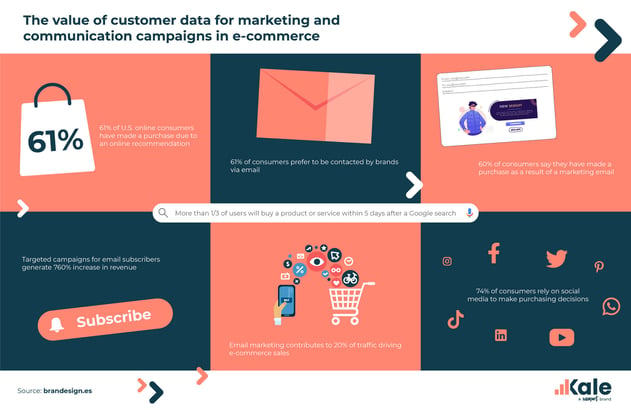Knowing the customer has become paramount for companies, especially those who sell online. What's worrying is that, despite having more and more data about their customers, business are still not exploiting data's full potential. Most times, it is due to the fact that data is stored in fragmented silos. A single customer view could be a solution for companies to overcome customer data segregation.

The business world has reached a new stage in which the customer is what matters most and, consequently, putting the customer at the center of all business strategies and actions (customer-centricity) is now a necessity. Knowing the customer equals power and the degree of knowledge about the customer determines, to a large extent, the success of communication and marketing strategies and actions. Moreover, customer data is the basis for informed business decisions (data-driven decisions).
Customer knowledge increases in value for companies operating online, which are increasingly concerned with providing better experiences for their customers, offering them exactly what they want and need, and adding value to their products and services in an attempt to differentiate themselves from the competition.
In e-commerce, a company's success is already 50% dependent on customer knowledge. Personalized marketing content, the development of unique and personalized customer experiences and the optimization of touch points are now the key to success. In other words, customer data is the key to success.

The problem with data and e-commerce
In their effort to give customers what they want, how they want it and through unique customer experiences, brands need to create complete profiles of their customers through segmentations such as buyer persona.
If you want more information about buyer persona and customer segmentation, you can read our previous post: 'Buyer Persona in the Era of Digital Marketing'.
Despite their burning need for knowledge, many companies fail to derive maximum value from their data because it is fragmented into silos that prevent information exchange and hamper the building of complete customer profiles. The customer data repository can be of great help in overcoming this problem and enhancing customer knowledge.
The problem for most organisations is very simple: the storage of data. In most organisations, each department stores their own customer data. For example, the marketing department typically uses data on web traffic, interaction with content, advertising campaigns, etc. The sales department uses other customer data related to sales, consumption habits, etc. In practice, all departments and business units have their own customer-related data, which they store in separate silos or data repositories, thus creating an operational fragmentation within the organisation. In addition, different departments employ divergent technological solutions so data is not only located in different places, but also kept in disparate formats.
Data scientists, according to interviews and expert estimates, spend from 50 percent to 80 percent of their time mired in this more mundane labor of collecting and preparing unruly digital data. (NYTimes).
All of this makes it extremely difficult for information to flow organically and prevents companies from creating complete customer profiles. Building a unified and comprehensive picture of each customer type can become complex, but having a single customer view can significantly ease the process.
What is a single customer view?
Single customer views are data warehousing and data integration systems that collect all customer-related data and unify it to create customer profiles and support the development of buyer personas. Essentially, it is a type of consumer-focused data integration that provides organisations with a 360-degree view of their customers.
Implementing a single customer view can transform business dynamics, foster customer-centric strategies and exponentially multiply customer knowledge.
At a technical level, single customer views are built through CDP platforms.
A Customer Data Platform (CDP) is a software with machine learning capabilities that stores and analyses customer interaction information across all communication channels and touch points.
What can a single customer view do for e-commerce companies?
Single customer views centralise data collection integrating all customer data into a single data warehouse and reorient data collection and integration towards a customer-centric perspective. This approach favours the management of audiences, the development of deeper segmentations and allows access to knowledge about a specific customer by any employee of the organisation. This knowledge can easily be transfered and flow within the company.
"A single customer view enables companies to gain a deep understanding of the different characteristics of their customers across multiple data sources located in different parts of the organisation. This allows them to build a very clear view of who the customer is and identify what further information they need to build comprehensive profiles". Borja Martín, Kale's director.
In addition, a single customer view promotes the enrichment of existing data with complementary information. By building a complete and unified picture of the consumer, it is much easier for businesses to realise what information they lack and what specific data they need to collect, thus forging a dynamic feedback loop. In addition, the global view of the customer allows brands to empathise more with their customers and, consequently, to take more timely and effective actions.
Would you like more information about single customer views or would like to know how it could be implemented in your business? Let's talk!
In short, nowadays customer knowledge equals power and, more than ever, companies need to create complete profiles of their customers. In this sense, single customer views could be the solution. They facilitate the organic flow of information within the organisation, enable the development of deeper segmentations and, ultimately, increase customer knowledge.




